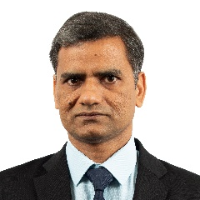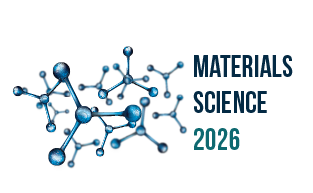3rd Global Event on
Materials Science and Engineering
October 29-30, 2026 | Berlin, Germany

Materials Science 2026

Institute for Infocomm Research, Singapore
Abstract:
The evolution of mm Wave and sub-mmWave technologies owes much to the development of reconfigurable antennas, essential for meeting the dynamic demands of wireless communication, satellite operations, and radar systems. From phased arrays to leaky waves and multi-beam configurations, these antennas play a pivotal role in applications requiring advanced beam management capabilities such as scanning, forming, and steering. This importance is underscored by the impending rollout of 5G/6G networks, demanding unprecedented adaptability in frequency, radiation patterns, and polarization to cater to the needs of next-generation wireless technologies. The integration of electronically tunable materials for antenna reconfiguration emerges as a promising frontier, enabling the manipulation of antenna properties by adjusting substrate characteristics. Leveraging materials like liquid crystals, VO2, ferroelectrics, graphene, dielectric and magnetic fluids, and metasurfaces facilitates dynamic shifts in dielectric constant, permittivity, and permeability. For instance, liquid crystals afford dynamic shifts in dielectric constant through voltage modulation, while ferrite materials offer the ability to modify permittivity and permeability with external fields. Furthermore, metasurface antennas utilize physical manipulation to adjust effective permittivity, enabling precise tuning of the resonant frequency. The quest for frequency agility is furthered by materials such as barium-strontium-titanate (BST), yttrium iron garnet (YIG), and innovative fluids, allowing for the electrical modulation of material properties. These technological advancements are poised to significantly enhance the efficiency and adaptability of antenna systems, heralding a new era of innovation in communication and sensing technologies. They ensure that the infrastructure of tomorrow is equipped to meet the complex and evolving demands of our digital world, facilitating seamless connectivity and enabling transformative applications across various domains.
Biography:
Dr. Nasimuddin (M’2003-SM’2009) received his B.Sc. in 1994 from JMI, India, and his M.Tech. and Ph.D. in 1998 and 2004, respectively, from DU, India. Dr. Nasimuddin has worked as a Senior Research Fellow (1999-2003) at DU, India. He has worked as an APD Research Fellow (2004-2006) at Macquarie University, Australia. Currently, he is working as a principal scientist at the Institute for Infocomm Research, A*STAR, Singapore. He has published 235 journal/conference papers and 3 granted patents on microstrip-based microwave antennas/components. He has edited two books, contributed a chapter, and ranked in the top 2% of World Scientists in 2023.
